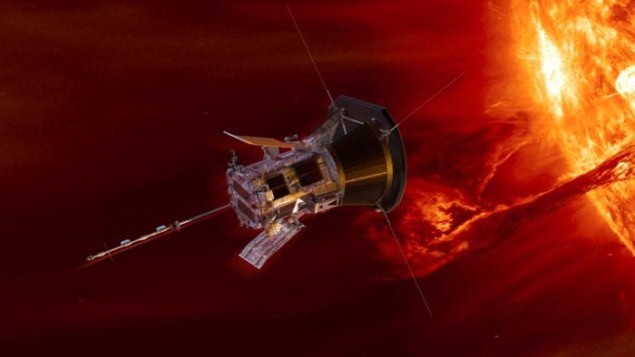
NASA has confirmed that its Parker Solar Probe has survived its record-breaking closest approach to the solar surface. The incident occurred on 24 December where it flew some 6.1 million kilometres above the surface of the Sun – well within the orbit of Mercury. A “beacon tone” that was received on 26 December with further telemetry taken on 1 January confirmed that the spacecraft not only survived but also executed the commands that had been pre-programmed into its flight computers before the flyby.
The Parker Solar Probe – named after physicist Eugene Parker who was born in 1927 and made several breakthroughs of our understanding of the solar wind and also explained why the Sun’s corona is hotter than its surface – was launched in 2018 from NASA’s Kennedy Space Center in Florida.
The mission carries four instruments including magnetometers, an imager and two dedicated particle analysers. To withstand the intense temperatures, which can reach almost 1400°C, the spacecraft and instruments are protected by a 11.4 cm carbon-composite shield.
During the mission’s seven-year lifespan, it will perform 24 orbits around the Sun with the next close solar passes occurring on 22 March and 19 June. Data transmission from the first pass in December will begin later this month when the spacecraft and its most powerful onboard antenna are in better alignment with Earth to transmit at higher data rates. NASA launches Parker Solar Probe mission to ‘touch’ the Sun
“Flying this close to the Sun is a historic moment in humanity’s first mission to a star,” notes Nicky Fox, head of the Science Mission Directorate at NASA headquarters in Washington. “By studying the Sun up close, we can better understand its impacts throughout our solar system, including on the technology we use daily on Earth and in space, as well as learn about the workings of stars across the universe to aid in our search for habitable worlds beyond our home planet.”



